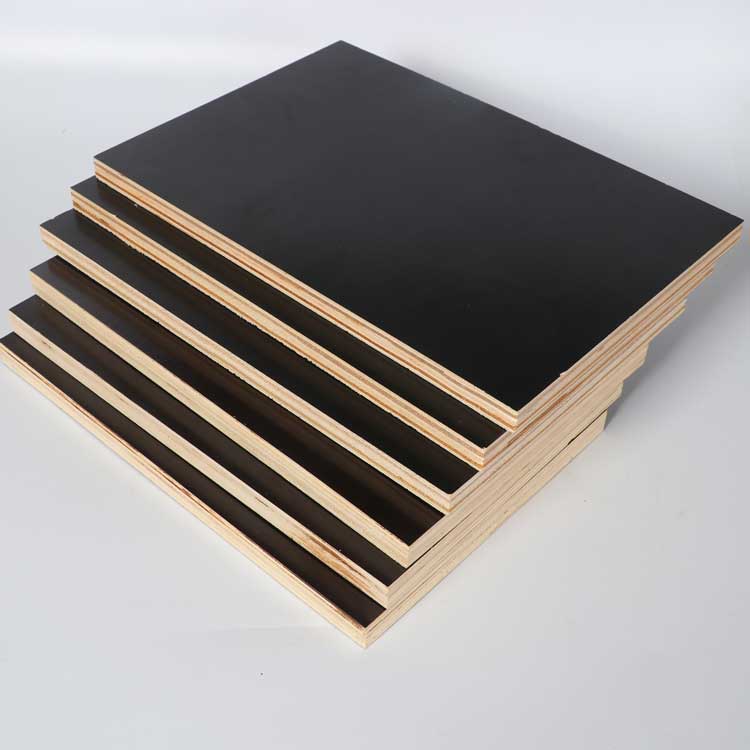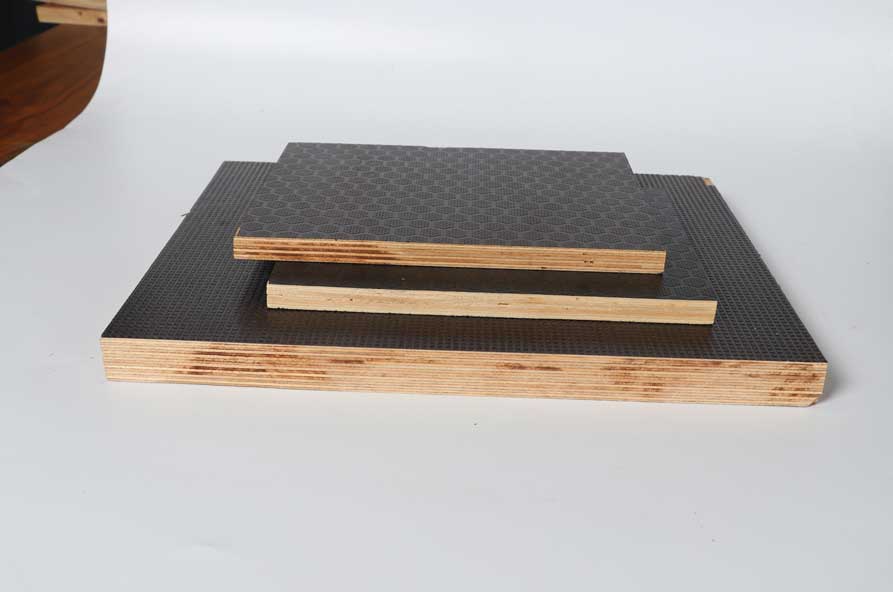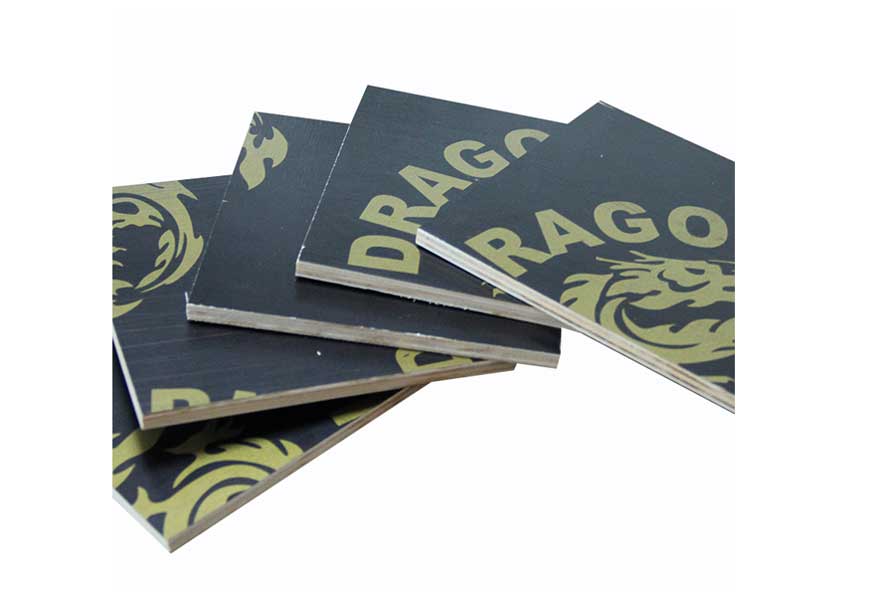Plywood is a board that is made by cutting logs into large veneers along the direction of annual rings, drying and gluing, and forming blanks and gluing according to the principle that the wood grain directions of adjacent veneer layers are perpendicular to each other.

The number of veneer layers is odd, generally three to thirteen layers, common three plywood, five plywood, nine plywood, and thirteen plywood (commonly known as three plywood, five plywood, nine plywood, thirteen plywood in the market plate).
The outermost front veneer is called the panel, the reverse is called the backplane, and the inner layer is called the core board. Plywood can improve the utilization rate of wood and is a main way to save wood.
Where is construction plywood used?
Plywood is one of the commonly used materials for construction and furniture. It is one of the three major panels of wood-based panels. It can also be used for aircraft, ships, trains, automobiles, buildings and packaging boxes.
A group of veneer is usually formed by gluing the wood grain directions of adjacent layers perpendicular to each other. Usually, the surface plate and the inner layer are symmetrically arranged on both sides of the center layer or the core. It is a slab made of glued veneers crisscrossed in the direction of the wood grain, and pressed under the condition of heating or no heating. The number of layers is generally odd, and a few are even. The physical and mechanical properties in the vertical and horizontal directions are slightly different.

What are the dimensions of construction plywood ?
The length and width specifications are: 1220×2440mm,
Thickness specifications: 3, 5, 9, 12, 15, 18mm, etc.
The main tree species are: camphor, willow, poplar, eucalyptus and so on.
Where is construction plywood used?
- Plywood is weather-resistant and boiling-water-resistant plywood, which has the advantages of durability, high temperature resistance, and steam treatment;
- The plywood is water-resistant plywood, which can be dipped in cold water and hot water for a short time;
- The plywood is moisture-resistant plywood, which can be dipped in cold water for a short time, and is suitable for indoor use at room temperature. for furniture and general construction purposes;
- Plywood is not moisture-resistant plywood, which is used under normal conditions indoors. General-purpose plywood materials include beech, basswood, ash, birch, elm, poplar, etc.
Construction plywood is mainly used in outdoor conditions, such as building exterior decoration and concrete formwork. It is mainly used in ceilings, wall skirts, floor linings, cabinets, tables and other furniture in decoration projects.
The characteristics of building flame retardant plywood
The material characteristics of building flame retardant plywood are good structural strength and stability, and it is mainly used for the floor of decorative panels and the back panel of panel furniture. Therefore, the choice of flame retardant plywood is of great significance. Good flame retardant plywood determines the quality of good items and lays the foundation for our healthy work and life.

How to choose building flame retardant plywood?
1.Look at environmental protection.
It depends on whether the release of harmful gases meets the national standards, especially whether the free formaldehyde released by the glue exceeds the standard. For these highly professional things, most consumers may not understand or be able to measure them. Therefore, it is a shortcut to see whether the manufacturer has China environmental labeling product certification.
Because to pass the certification, it is necessary to meet the standards of quality and environmental protection as the premise. Second, look at the material. Consumers can choose varieties of different materials according to different needs.
At present, the market is flooded with a large number of low-priced meranti core flame retardant plywood. In fact, this is the surface coloring treatment of poplar core board, so the appearance is basically the same as that of meranti core board, but the quality is far different. In fact, eucalyptus core board is higher than poplar core board in terms of weight and hardness and toughness. Consumers should identify carefully when purchasing to avoid being deceived.
2.Look at the workmanship.
The plywood of flame retardant plywood has the difference between the positive and negative sides. When purchasing, the flame-retardant plywood should have a clear wood grain, a smooth and smooth front, a smooth and non-stagnant feel, and at least the back should not be rough. It is better not to have nodes. Even if there are, they should be smooth and beautiful, and will not affect the construction.
If the flame retardant plywood is degummed, it will not only affect the construction, but also cause greater pollution. Therefore, when choosing, it depends on whether there is degumming or loose glue. You can tap each part of the flame retardant plywood with your hands. If the sound is brittle and uniform, it proves that the quality is good; if the sound is dull and uneven, it means The splint has appeared loose glue.
3.Look at the appearance.
When consumers buy, they should see whether there are blisters, cracks, worm holes, bumps, stains, defects, and excessive repair tape for each flame retardant plywood. It is made of veneers with different textures attached together, so when choosing, you should pay attention to whether the joints of the splints are tight and whether there is any unevenness.
According to the classification of flame-retardant plywood, there are also different sub-working uses: a class of flame-retardant plywood is weather-resistant, boiling water-resistant flame-retardant plywood, which has the characteristics of high temperature resistance and steam treatment.

